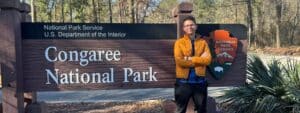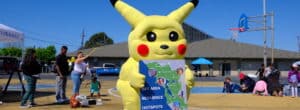By Rowena Coetsee
Land-use issues were front and center at a recent forum here where city council candidates shared their views on how Antioch should develop.
Councilwoman Monica Wilson and Mayor Wade Harper were absent as was challenger Karl Dietzel, who was injured in a fall.
Sponsored by the Greenbelt Alliance, Save Mount Diablo, Sierra Club and League of Conservation Voters of the East Bay, the recent debate at Prewett Family Park drew a capacity crowd.
Asked to comment on the city’s plans to develop up to 4,000 homes on a 2,712-acre swath of land in southeast Antioch known as the Sand Creek Focus Area, Sean Wright disliked the idea of a development that the city has approved there proceeding with plans to build single-family residences on lots that he says are too small.
But Councilwoman Lori Ogorchock defended the action, saying that commuters currently tend to prefer more compact homes because they can spend less time maintaining their property and more enjoying their families.
Ken Turnage II disagreed, saying that people would like larger homes if they didn’t have to spend so much time commuting to work.
Growth is inevitable, he added, so it’s important that developers build in the right areas on properly sized lots.
Both he and Councilwoman Mary Rocha think Antioch the Sand Creek Focus Area should include large “estate” homes — developers’ money is what provides amenities like road improvements and utilities to new schools, Rocha noted.
But she also wants the city to approve housing that people at all income levels can afford.
“Otherwise, you wouldn’t be here yourself,” Rocha said.
Lamar Thorpe emphasized the importance of developing the city in such a way that there are not many more homes than jobs.
He and Ogorchock also mentioned that preserving southeast Antioch’s hills are important.
Challengers Fred Rouse and Gil Murillo objected to any kind of growth, saying that Antioch lacks the infrastructure to support existing homes.
“Today … we need to look at simple things,” said Murillo, who thinks one of the city’s priorities should be generating jobs.
According to the law of supply and demand, building more homes devalues those that are already here, Rouse said. Doctors, attorneys and other highly paid professionals can buy from the housing stock available — they don’t need large, “estate” properties, he added.
The advent of a Bay Area Rapid Transit station in Antioch around December 2017 elicited mixed comments.
Rouse cited the need to ensure the facility is safe given that criminals can jump on BART as easily as Highway 4 to make their getaway.
Murillo noted that there’s no guarantee BART will assign any of its police officers to the station, adding that he would push to bring a California Highway Patrol office back to the area.
Turnage would like the city to reconfigure the newly drawn traffic lanes on Hillcrest Avenue where the station is being built to make it safer for drivers to get there.
As it is, where each lane is leading is extremely confusing, he said.
“Right now I’m surprised we have not had at least an average of an accident every two days in that area,” Turnage said.
The city needs leaders who will insist on building residential units as well as commercial properties near BART so people can walk to the trains as well as shop near home, Thorpe said.
Ogorchock offered unqualified praise for the coming station, however, saying that BART will reduce congestion on Highway 4 and boost the value of nearby homes by tens of thousands of dollars.
Asked what the city’s priorities should be for improving its downtown, candidates diverged again.
Install better lighting so visitors can relax, Turnage said.
“I can understand why a lot of people would be nervous walking around,” he said.
Business owners are too, added Wright, who said they don’t feel safe parking behind the buildings where they work, yet must move their vehicle frequently if they use the two-hour parking stalls in front.
Ogorchock suggested bringing downtown merchants together in a type of Neighborhood Watch, whereas Rouse thought police should crack down on methamphetamine use to reduce the incidence of robberies that scare people away from the downtown.
Thorpe, Wright, Murillo and Ogorchock said they oppose the city’s plans to approve the construction of about 31 town homes on an empty waterfront lot;
Murillo mentioned that he has found a business willing to pay to build an event center there instead and share its maintenance costs.
Turnage is no fan of the town homes idea, but he also dislikes putting an open-air amphitheater there on the Second Street parcel because of the lack of infrastructure.
Antioch’s Marina would be better because it already has parking and bathrooms as well as walking trails to adjoining wetlands, he said, adding that a commercial building housing popular amenities like a coffee shop and ice cream parlor would be a better use for the lot.
Rocha focused on other ways of revitalizing the downtown.
“I think its time is coming,” she said, noting that the city is contemplating building a ferry terminal there and the former Humphrey’s restaurant likely will be getting new tenants.
Asked how they would find money to make Antioch’s 33 parks safer, Thorpe noted that Measure C is already in place; some of the revenue from the half-cent sales tax goes to the police department to hire more officers.
But no one disputed that the city still is having a difficult time reaching its goal of 102 officers because so many are retiring, going on medical leave or taking jobs with other agencies.
The city has hired 41 cops since Measure C took effect in April 2014, but there has been a net gain of only 12.
“We have enough money — we do,” Murillo said.
The city already has mutual aid agreements with other cities; given the shortage of police, why not enlist outside help to make Antioch’s parks safer? he said.
“There’s no reason why we can’t go the county and hire officers from the … regional parks (district) to watch our parks,” Murillo said.
When the discussion turned to developing Antioch’s industrially zoned areas, Wright pointed out that the new owners of a 108-acre property on Wilbur Avenue where a paper mill once operated will be removing toxins from that site, paving the way for a chance to create more jobs.
And Ogorchock noted that the city just signed an agreement with a solar energy company that will keep thousands of tons of carbon dioxide out of the air.
Rouse thought the city should require businesses in its industrial areas to use renewable energy, recycle materials and clean up their waste.
Turnage and Thorpe agreed that the city must stand firm when negotiating for what it wants with a business that’s interested in occupying an industrial site.
Rocha believes Antioch should collaborate with East County’s other cities to market the proximity of its industrial corridor to railway and water transportation as well as to the now-wider Highway 4.
Murillo wasn’t so sure about reserving the Wilbur Avenue area for industry, however.
These type of companies don’t always survive hard times, he said, so the city should ask residents what kind of businesses they would like to see in that area that not only would employ locals but are stable.



